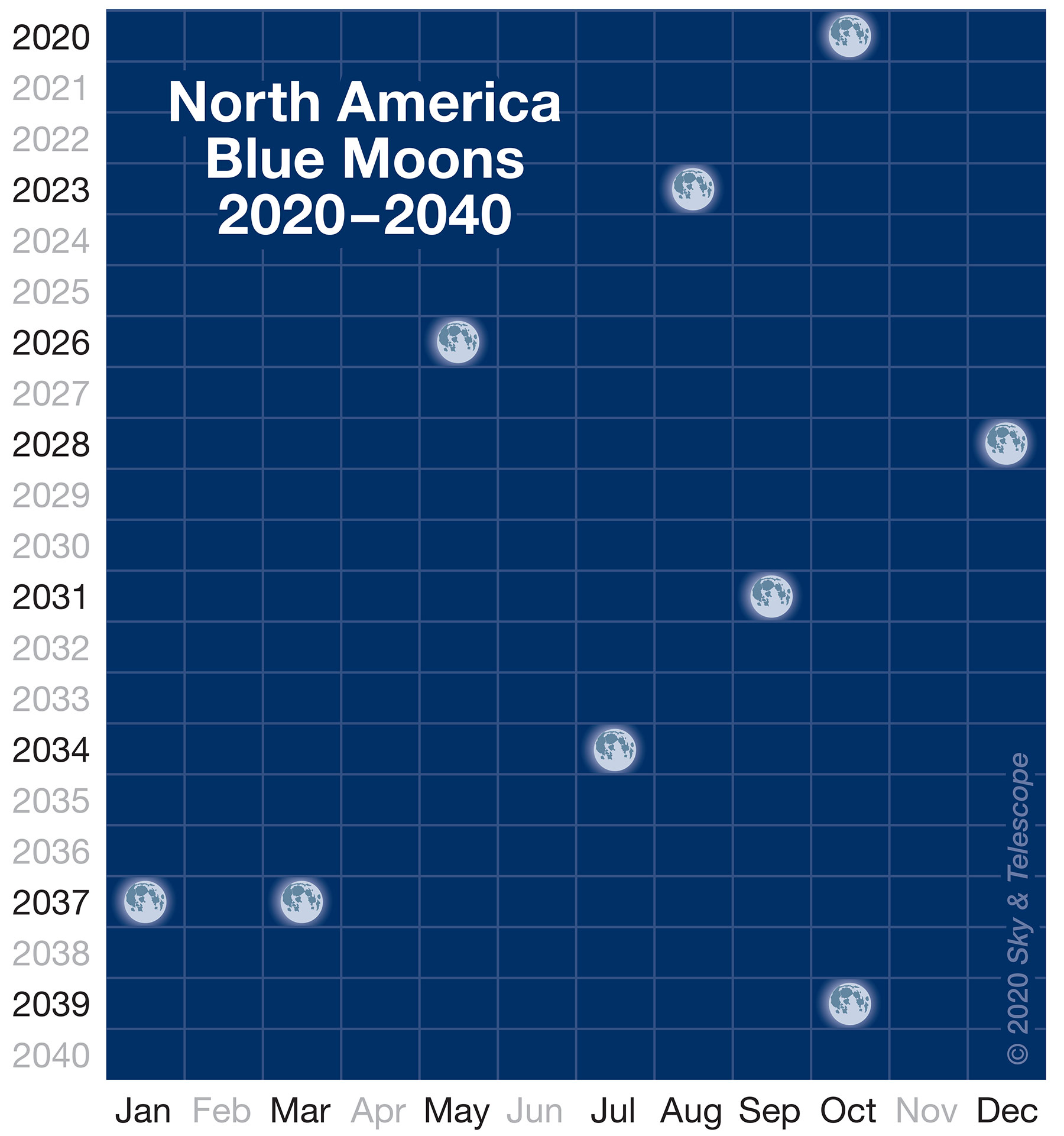Rare Halloween 'Blue Moon' is a spooky treat for us all
Editor's note: A live view of the Blue Moon rising over Rome from the Virtual Telescope will begin at 12:30 p.m. EDT.
Skywatchers, ghouls and (especially) werewolves take note: The moon will be full this Halloween night across the entire United States.
This is a truly special confluence of spookiness; a Halloween full moon visible for most time zones on Earth hasn't happened since 1944, according to the Farmers' Almanac. It won't happen again until 2039.
But wait, there's more: The Oct. 31 full moon also happens to be a "blue moon," a designation for the second full moon to occur in a single calendar month. Blue moons are relatively rare as well, occurring on average just once every 2.5 years or so. We last saw one in March 2018. The next one is in August 2023.
You can watch the Halloween Blue Moon live online in a webcast from the Virtual Telescope today starting at 12:30 p.m. EDT (1630 GMT). Astrophysicist Gianluca Masi will webcast live views of the full moon as it rises over Rome, Italy. You can follow the webcast on Virtual Telescope website here, and on YouTube. It will also be carried live on this page at start time.
Related: Rare Halloween 'Blue Moon' is a spooky treat for us all
More: Space Halloween pumpkins a cosmic treat (photos)
The current definition of "blue moon" is actually a misinterpretation of the original one, by the way. The term once referred to the third full moon in a season (winter, spring, summer or fall) that sported four full moons instead of the usual three, a definition laid out by the Maine Farmers' Almanac in the 1930s.
Breaking space news, the latest updates on rocket launches, skywatching events and more!
"But in 1946, amateur astronomer and frequent contributor to Sky & Telescope James Hugh Pruett (1886–1955) incorrectly interpreted the Almanac's description, and the second-full-moon-in-one-month usage was born," Sky & Telescope wrote in an explainer this week.
And in case you were wondering — "blue moon" has nothing to do with color. The moon can sometimes appear bluish, thanks to the scattering of light by dust or smoke particles in Earth's atmosphere, but such effects are not tied to the moon's phases at all.
Editor's note: If you snap an amazing photo of the Halloween Blue Moon and would like to share it with Space.com for a story or photo gallery, send comments and images to spacephotos@space.com.
We can also call this Halloween full moon the Hunter's Moon, the traditional name for the first full moon after the Harvest Moon. The Harvest Moon is the one that falls closest to the Northern Hemisphere autumnal equinox, which occurred this year on Sept. 22. In 2020, that distinction went to the full moon of Oct. 1.
And one last thing: The Halloween full moon this year also qualifies as a "micro-moon" or "minimoon," because it will occur when the moon is close to its farthest point from Earth in its elliptical orbit. For example, on Oct. 30, the moon will be 252,522 miles (406,394 kilometers) from us — notably farther than its average distance of about 238,900 miles (384,500 km). You probably won't notice the difference, however, unless you're particularly sharp-eyed or obsessive about these sorts of things.
Editor's note: This story was updated on Oct. 31 to include webcast details of the Blue Moon from The Virtual Telescope. It was also corrected to reflect that the full moon will be visible to some in Australia and elsewhere on Nov. 1, not Halloween.
Mike Wall is the author of "Out There" (Grand Central Publishing, 2018; illustrated by Karl Tate), a book about the search for alien life. Follow him on Twitter @michaeldwall. Follow us on Twitter @Spacedotcom or Facebook.

Michael Wall is a Senior Space Writer with Space.com and joined the team in 2010. He primarily covers exoplanets, spaceflight and military space, but has been known to dabble in the space art beat. His book about the search for alien life, "Out There," was published on Nov. 13, 2018. Before becoming a science writer, Michael worked as a herpetologist and wildlife biologist. He has a Ph.D. in evolutionary biology from the University of Sydney, Australia, a bachelor's degree from the University of Arizona, and a graduate certificate in science writing from the University of California, Santa Cruz. To find out what his latest project is, you can follow Michael on Twitter.

